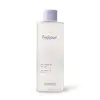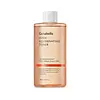What's inside
What's inside
 Key Ingredients
Key Ingredients

 Benefits
Benefits

 Concerns
Concerns

 Ingredients Side-by-side
Ingredients Side-by-side

Water
Skin ConditioningMethylpropanediol
SolventButylene Glycol
HumectantGlycerin
HumectantGlycereth-26
HumectantHydrolyzed Collagen
EmollientCollagen Extract
Skin ConditioningCollagen
MoisturisingSoluble Collagen
HumectantCollagen Amino Acids
MoisturisingSodium Soy Hydrolyzed Collagen
Zinc Hydrolyzed Collagen
Skin ConditioningAtelocollagen
Skin Conditioning1,2-Hexanediol
Skin ConditioningPropanediol
SolventCaprylyl Glycol
EmollientIllicium Verum Fruit Extract
PerfumingSodium Hyaluronate
HumectantPolysorbate 80
EmulsifyingLauryl Pg-Dimonium Chloride
CleansingAllantoin
Skin ConditioningHydrolyzed Elastin
EmollientMelaleuca Alternifolia Leaf Extract
PerfumingCentella Asiatica Extract
CleansingAdenosine
Skin ConditioningDisodium EDTA
Panthenol
Skin ConditioningEthylhexylglycerin
Skin ConditioningAcetyl Hexapeptide-8
HumectantCopper Tripeptide-1
Skin ConditioningPalmitoyl Pentapeptide-4
Skin ConditioningAcetyl Tetrapeptide-5
HumectantPalmitoyl Tripeptide-1
Skin ConditioningNonapeptide-1
Skin ConditioningDipeptide-2
Skin ConditioningTripeptide-1
Skin ConditioningHexapeptide-9
Skin ConditioningSalvia Apiana Oil
PreservativeDipotassium Glycyrrhizate
HumectantSodium Citrate
BufferingC12-15 Alkyl Benzoate
AntimicrobialGlycyrrhiza Glabra Root Extract
BleachingDiospyros Kaki Fruit Extract
Skin ConditioningMorus Alba Extract
AstringentCocos Nucifera Fruit Extract
EmollientBakuchiol
AntimicrobialTocopheryl Acetate
AntioxidantRetinal
Skin ConditioningLecithin
EmollientCaprylic/Capric Triglyceride
MaskingAscorbic Acid
AntioxidantCeramide NP
Skin ConditioningWater, Methylpropanediol, Butylene Glycol, Glycerin, Glycereth-26, Hydrolyzed Collagen, Collagen Extract, Collagen, Soluble Collagen, Collagen Amino Acids, Sodium Soy Hydrolyzed Collagen, Zinc Hydrolyzed Collagen, Atelocollagen, 1,2-Hexanediol, Propanediol, Caprylyl Glycol, Illicium Verum Fruit Extract, Sodium Hyaluronate, Polysorbate 80, Lauryl Pg-Dimonium Chloride, Allantoin, Hydrolyzed Elastin, Melaleuca Alternifolia Leaf Extract, Centella Asiatica Extract, Adenosine, Disodium EDTA, Panthenol, Ethylhexylglycerin, Acetyl Hexapeptide-8, Copper Tripeptide-1, Palmitoyl Pentapeptide-4, Acetyl Tetrapeptide-5, Palmitoyl Tripeptide-1, Nonapeptide-1, Dipeptide-2, Tripeptide-1, Hexapeptide-9, Salvia Apiana Oil, Dipotassium Glycyrrhizate, Sodium Citrate, C12-15 Alkyl Benzoate, Glycyrrhiza Glabra Root Extract, Diospyros Kaki Fruit Extract, Morus Alba Extract, Cocos Nucifera Fruit Extract, Bakuchiol, Tocopheryl Acetate, Retinal, Lecithin, Caprylic/Capric Triglyceride, Ascorbic Acid, Ceramide NP
Water
Skin ConditioningButylene Glycol
HumectantGlycerin
HumectantPropanediol
SolventNiacinamide
SmoothingDipropylene Glycol
Humectant1,2-Hexanediol
Skin ConditioningPanthenol
Skin ConditioningSodium Dna
Skin ConditioningCitric Acid
BufferingEthylhexylglycerin
Skin ConditioningAdenosine
Skin ConditioningXanthan Gum
EmulsifyingSodium Citrate
BufferingDisodium EDTA
Sodium Hyaluronate
HumectantPortulaca Oleracea Extract
Skin ConditioningCentella Asiatica Extract
CleansingHydrolyzed Vegetable Protein
Skin ConditioningMaltodextrin
AbsorbentBeta-Glucan
Skin ConditioningTocopherol
AntioxidantHyaluronic Acid
HumectantHydrolyzed Sodium Dna
Skin ConditioningHydroxypropyltrimonium Hyaluronate
Madecassoside
AntioxidantHydrolyzed Hyaluronic Acid
HumectantTripeptide-1
Skin ConditioningSodium Acetylated Hyaluronate
HumectantSodium Hyaluronate Crosspolymer
HumectantMadecassic Acid
Skin ConditioningHydrolyzed Sodium Hyaluronate
Skin ConditioningAsiatic Acid
Skin ConditioningAsiaticoside
AntioxidantAcetyl Hexapeptide-8
HumectantPotassium Hyaluronate
Skin ConditioningWater, Butylene Glycol, Glycerin, Propanediol, Niacinamide, Dipropylene Glycol, 1,2-Hexanediol, Panthenol, Sodium Dna, Citric Acid, Ethylhexylglycerin, Adenosine, Xanthan Gum, Sodium Citrate, Disodium EDTA, Sodium Hyaluronate, Portulaca Oleracea Extract, Centella Asiatica Extract, Hydrolyzed Vegetable Protein, Maltodextrin, Beta-Glucan, Tocopherol, Hyaluronic Acid, Hydrolyzed Sodium Dna, Hydroxypropyltrimonium Hyaluronate, Madecassoside, Hydrolyzed Hyaluronic Acid, Tripeptide-1, Sodium Acetylated Hyaluronate, Sodium Hyaluronate Crosspolymer, Madecassic Acid, Hydrolyzed Sodium Hyaluronate, Asiatic Acid, Asiaticoside, Acetyl Hexapeptide-8, Potassium Hyaluronate
 Reviews
Reviews

Ingredients Explained
These ingredients are found in both products.
Ingredients higher up in an ingredient list are typically present in a larger amount.
1,2-Hexanediol is a synthetic liquid and another multi-functional powerhouse.
It is a:
- Humectant, drawing moisture into the skin
- Emollient, helping to soften skin
- Solvent, dispersing and stabilizing formulas
- Preservative booster, enhancing the antimicrobial activity of other preservatives
Acetyl Hexapeptide-8, commonly known as Argireline or Acetyl Hexapeptide-3, is a popular peptide in skincare. It’s often referred to as a “Botox-like” ingredient because it helps reduce muscle movement.
By relaxing these micro-movements, Argireline may help minimize the appearance of fine lines and wrinkles. That said, it’s not as powerful as Botox, and research on its long-term effectiveness is still limited.
Beyond smoothing, Argireline may also support collagen production. Collagen is the protein that helps keep your skin firm, bouncy, and well-hydrated by strengthening the skin barrier.
So while Argireline isn’t a miracle fix, it can be a helpful addition to a routine focused on both prevention and skin health.
Read more about other common types of peptides here:
Learn more about Acetyl Hexapeptide-8Adenosine is in every living organism. It is one of four components in nucleic acids that helps store our DNA.
Adenosine has many benefits when used. These benefits include hydrating the skin, smoothing skin, and reducing wrinkles. Once applied, adenosine increases collagen production. It also helps with improving firmness and tissue repair.
Studies have found adenosine may also help with wound healing.
In skincare products, Adenosine is usually derived from yeast.
Learn more about AdenosineButylene Glycol (or BG) is used within cosmetic products for a few different reasons:
Overall, Butylene Glycol is a safe and well-rounded ingredient that works well with other ingredients.
Though this ingredient works well with most skin types, some people with sensitive skin may experience a reaction such as allergic rashes, closed comedones, or itchiness.
Learn more about Butylene GlycolCentella Asiatica Extract (Centella) is derived from an herb native to Southeast Asia. It is famous for its anti-inflammatory and soothing properties.
Centella is rich in antioxidants and amino acids, such as Madecassic Acid and Asiaticoside.
Studies show the compounds in centella help with:
The combination of all these properties makes centella effective at soothing, hydrating, and protecting the skin.
Other great components of centella include Vitamin A, vitamin C, several B vitamins, and Asiatic Acid.
Fun fact: Centella has been used as a medicine and in food for many centuries. As a medicine, it is used to treat burns, scratches, and wounds.
Learn more about Centella Asiatica ExtractDisodium EDTA plays a role in making products more stable by aiding other preservatives.
It is a chelating agent, meaning it neutralizes metal ions that may be found in a product.
Disodium EDTA is a salt of edetic acid and is found to be safe in cosmetic ingredients.
Learn more about Disodium EDTAEthylhexylglycerin (we can't pronounce this either) is commonly used as a preservative and skin softener. It is derived from glyceryl.
You might see Ethylhexylglycerin often paired with other preservatives such as phenoxyethanol. Ethylhexylglycerin has been found to increase the effectiveness of these other preservatives.
Glycerin is already naturally found in your skin. It helps moisturize and protect your skin.
A study from 2016 found glycerin to be more effective as a humectant than AHAs and hyaluronic acid.
As a humectant, it helps the skin stay hydrated by pulling moisture to your skin. The low molecular weight of glycerin allows it to pull moisture into the deeper layers of your skin.
Hydrated skin improves your skin barrier; Your skin barrier helps protect against irritants and bacteria.
Glycerin has also been found to have antimicrobial and antiviral properties. Due to these properties, glycerin is often used in wound and burn treatments.
In cosmetics, glycerin is usually derived from plants such as soybean or palm. However, it can also be sourced from animals, such as tallow or animal fat.
This ingredient is organic, colorless, odorless, and non-toxic.
Glycerin is the name for this ingredient in American English. British English uses Glycerol/Glycerine.
Learn more about GlycerinPanthenol is a common ingredient that helps hydrate and soothe the skin. It is found naturally in our skin and hair.
There are two forms of panthenol: D and L.
D-panthenol is also known as dexpanthenol. Most cosmetics use dexpanthenol or a mixture of D and L-panthenol.
Panthenol is famous due to its ability to go deeper into the skin's layers. Using this ingredient has numerous pros (and no cons):
Like hyaluronic acid, panthenol is a humectant. Humectants are able to bind and hold large amounts of water to keep skin hydrated.
This ingredient works well for wound healing. It works by increasing tissue in the wound and helps close open wounds.
Once oxidized, panthenol converts to pantothenic acid. Panthothenic acid is found in all living cells.
This ingredient is also referred to as pro-vitamin B5.
Learn more about PanthenolPropanediol is an all-star ingredient. It softens, hydrates, and smooths the skin.
It’s often used to:
Propanediol is not likely to cause sensitivity and considered safe to use. It is derived from corn or petroleum with a clear color and no scent.
Learn more about PropanediolSodium Citrate is the sodium salts of citric acid. In skincare, it is used to alter pH levels and acts as a preservative.
Its main functions are to maintain the pH of a product and neutralize metal ions.
The acidity of our skin is maintained by our glands and skin biome; normal pH level of skin is slightly acidic (~4.75-5.5).
Being slightly acidic allows our skin to create an "acid mantle". This acid mantle is a thin barrier that protects our skin from bacteria and contaminants.
Learn more about Sodium CitrateSodium Hyaluronate is hyaluronic acid's salt form. It is commonly derived from the sodium salt of hyaluronic acid.
Like hyaluronic acid, it is great at holding water and acts as a humectant. This makes it a great skin hydrating ingredient.
Sodium Hyaluronate is naturally occurring in our bodies and is mostly found in eye fluid and joints.
These are some other common types of Hyaluronic Acid:
Learn more about Sodium HyaluronateTripeptide-1, also known as GHK), is a small, three-amino-acid peptide made up of glycine, histidine, and lysine.
This ingredient is a signal peptide and tell your skin to start producing fresh collagen, elastin, and other key structural proteins. This helps maintain firmness and reduces the look of fine-lines/wrinkles.
GHK is also unique because is also acts as a carrier peptide. It binds to and transports copper ions (forming the complex GHK-Cu). This form has been studied for decades and is known to stimulate wound healing, boost antioxidant defenses, and promote collagen/elastin synthesis.
In-vitro studies show both GHK and GHK-CU increase fibroblast activity that enhances the production of collagen, elastin, fibronectin, and other extracellular matrix components.
Both of these compounds also help balance enzymes that control collagen breakdown.
Human studies (in-vivo) using GHK-Cu creams have reported visible improvements to skin density, elasticity, and wrinkle depth after several weeks of use.
A small clinical study also found topical collagen tripeptide improved wrinkle appearance and skin elasticity in women after four weeks.
While these results are promising, most research is based on GHK-Cu or its derivatives rather than Tripeptide-1 alone (Palmitoyl Tripeptide-1 is a famous derivative of GHK). However, the consensus still supports GHK as a potent skin-signaling molecule that can encourage regeneration and maintain youthful looking skin.
Fun fact: GHK is a naturally occurring fragment of type 1 collagen that can be found in human plasma, saliva, and urine.
Learn more about Tripeptide-1Water. It's the most common cosmetic ingredient of all. You'll usually see it at the top of ingredient lists, meaning that it makes up the largest part of the product.
So why is it so popular? Water most often acts as a solvent - this means that it helps dissolve other ingredients into the formulation.
You'll also recognize water as that liquid we all need to stay alive. If you see this, drink a glass of water. Stay hydrated!
Learn more about Water